I was watching somebody’s video about a night in a bivy tent. It was the usual stuff: sleeping under stars, freezing outside but two degrees higher temperature inside the tent. What a pleasure and comfort!
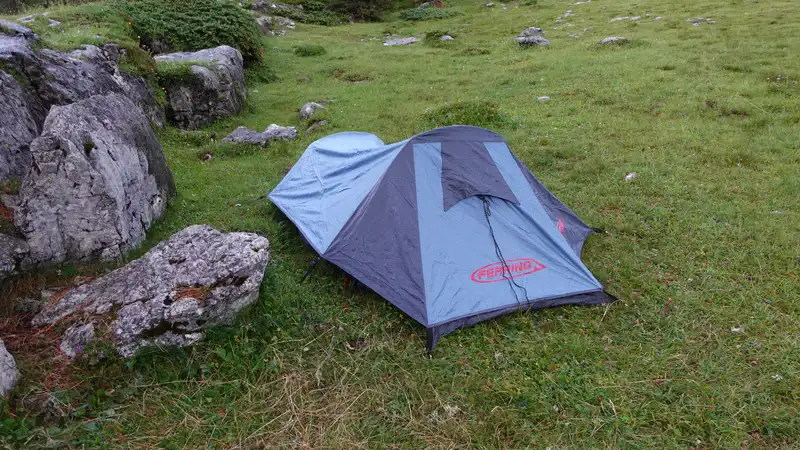
But the author missed saying anything about real issues which you have to deal with in such a shelter, in particular when there are no stars and you camp in the rain.
So I thought I could write a few words about using a bivy tent. Reality is indeed quite annoying and far different from what such videos may suggest.
But why would you take seriously anything I am saying? Well, the picture above is my own old Ferrino Lightent which is a bivy-type tent. You can see me using it in my tour to Cima delle Nove, and also in the Fanes park tour where that picture was taken.
So, I have quite a bit of experience with such a design, and not everything is really positive.
What I am going to say here is my own personal view, but I do not think I am biased, no reason to be. I am just a user, and you might consider what I am saying.

In general, using a bivy tent can be a mixed bag, perhaps great for lightweight minimalist camping, but it is not without its quirks.
Typically, you have a reasonably good combination of weight, packed size, and price. Perhaps the packed size is the best of the three. Of course, there are much lighter yet bigger tents on the market, but those you have to pay at least three times more or so.
No headroom
One of the most annoying things is the cramped space. You are basically cocooned in there, so forget about stretching out or sitting up comfortably.
If you are claustrophobic, it is a hard pass, it is like sleeping in a coffin. To realize what I mean, see the height of the Ferrino Sling 1 bivy tent below.
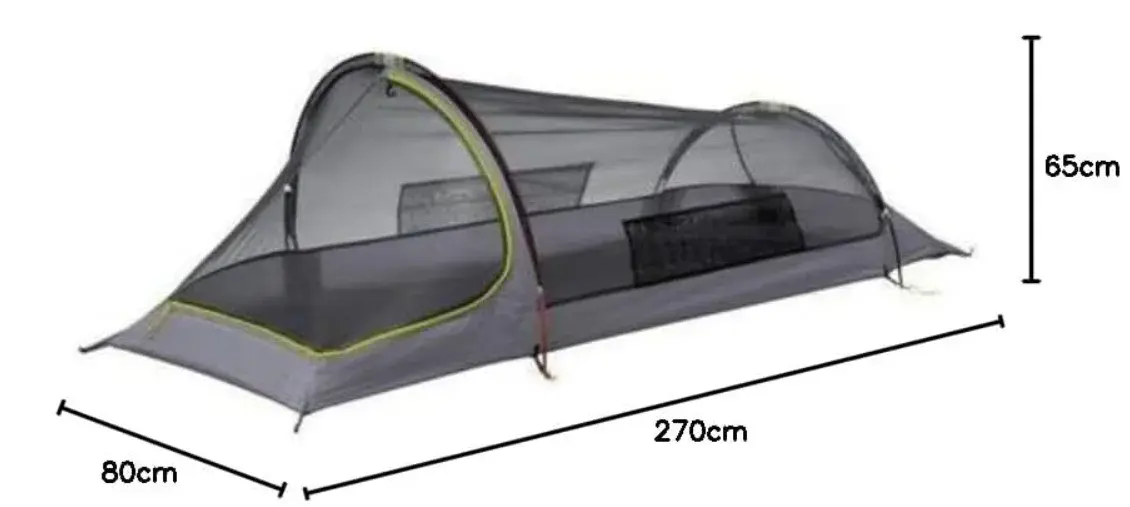
Very similar is the Snugpak Ionosphere 1 person tent, though it is a bit taller, with an 80 cm (31.5 in) peak height. My Ferrino Lightent 1 is 75 cm (30 in) high.
Getting in and out can feel like a wrestling match, especially if it is raining and you are trying not to drag mud or water inside.
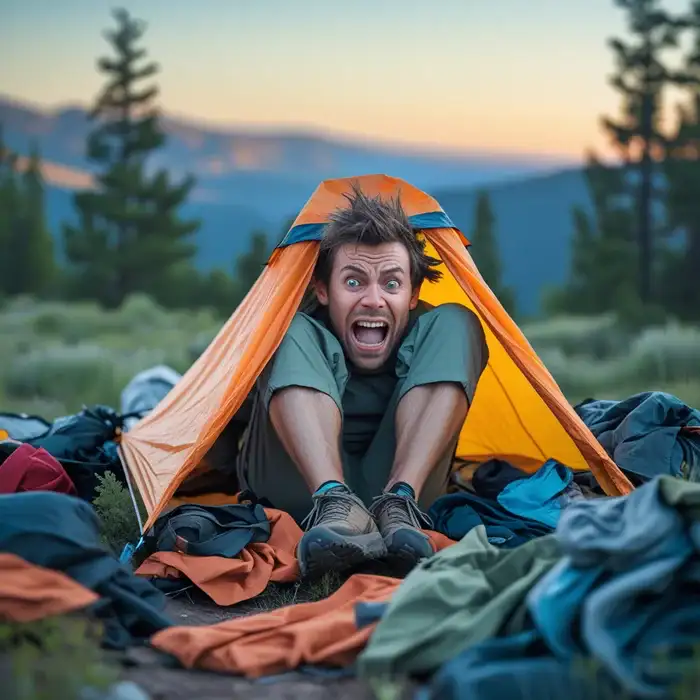
No place for cooking
You have probably seen advises about dangers of cooking in a tent. So, no worry, you are safe in a bivy tent. Even if you want to cook inside, you cannot possibly do that because there is no place.
The guy in the picture looks happy while sitting surrounded by snow in his Snugpak Ionosphere tent, but I wonder what he would do if it was raining. He could neither sit like that nor cook.
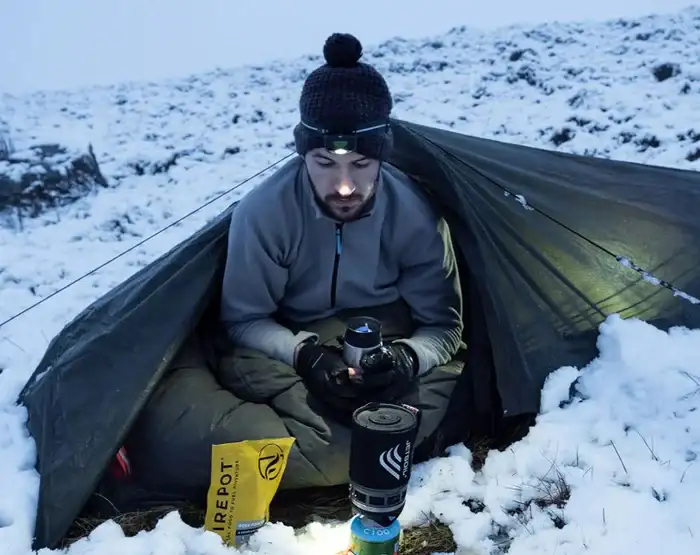
No air
Ventilation is another headache. They can get stuffy fast, and if the weather is warm or humid, you are waking up in a sweatbox with condensation dripping on your face. Even with a proper design, it is a gamble.
Good brands like Ferrino give detailed data for their tents. So for the previously mentioned Sling 1 tent, below you can see the volume of only 0.5 cubic meters that you have in the inner tent.
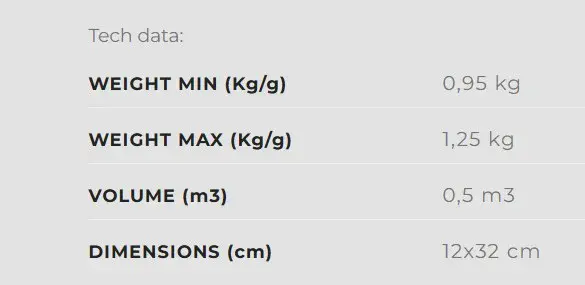
It is hard to believe this is all you have, but I know this closely from my own example.
The inner volume of my Ferrino tent is less than 0.6 cubic meters. Its tunnel shape is similar to their Sling 1 bivy tent. With a tapered floor and a decreasing ceiling height, its main part is basically a truncated cone cut in half along the length, so I am able to roughly calculate its volume.
No place for gear
Setup is usually simple, my tent has just two short loops similar to the Ferrino Sling tent in one of the pictures above. But there is no vestibule for gear, and you have already seen some numbers above regarding the inner tent’s volume.
So don’t even think about storing much gear inside; your pack is either squeezed in like a Tetris piece or left outside to fend for itself.

Limited socialization
Then there is the isolation factor. If you are with a group, you are not exactly chatting or sharing the experience like you would in a bigger tent. It is just you, your thoughts, and maybe a rogue mosquito that snuck in.
Practical for solo missions, sure, but it is not winning any awards for comfort or socializing. But, if you are annoyed by snoring of other people, this is the tent you need.

Packing nightmare when it is raining
Waking up in a bivy tent to pack up your gear, especially when it is wet outside, is a special kind of logistical nightmare.
No idea how it can look? Here it is, based on my own experience in a real bivy tent.
You are already squeezed into a space barely bigger than your body, and now you have to deflate your sleeping pad and wrestle your sleeping bag into its stuff sack, all without turning it into a damp, chaotic mess.
First, about the sleeping pad. If it is an inflatable one, you have got to open the valve and start rolling it up to push the air out.
But in a bivy, there is no room to maneuver. You are lying on it, so you have got to shimmy off to one side, half-propped on an elbow, trying to fold or roll it while your knees are jammed against the fabric walls.
Every move feels like you are fighting the tent itself, and if you are not careful, you are brushing against the condensation-soaked interior, getting your head, shoulder, and back wet.
The pad is never as cooperative as it was when you unpacked it either. It is floppy, awkward, and takes up what little space you have got.
If it is a self-inflating pad, then you have a serious problem in such a tiny enclosed space. I had it in both of my tours mentioned above, but it was raining only during the first one.
Then the sleeping bag. Compressing it inside a bivy is like trying to stuff a marshmallow into a straw. You have got to kneel or hunch over it, but there is no headroom, so your back is scraping the ceiling, picking up more of that lovely condensation.
Your elbows are pinned to your sides, and you are wrestling the bag into its sack with these tiny, frantic movements.
If it is a down bag, you are paranoid about it touching anything wet, because outside, everything is drenched, and the last thing you need is soggy insulation.
You cannot spread it out to shake it or air it, so you are just praying it is not already clammy from the night’s humidity.
The whole process is a claustrophobic, damp juggling act. And since you cannot step out to do it (wet grass, mud, or rain waiting to ruin your day), you are stuck in this tiny cocoon, balancing your gear on your lap or shoving it into corners that do not exist.
By the time you are done, you are mildly damp, and probably cursing the minimalist life.
Ever dealt with that kind of morning shuffle? If not, and if you want to try, here is one bivy tent as an example, Ferrino Lightent Pro, a modern cousin of my tent, so try it. Oh yes, in specifications they give the volume, it is only 0.6 cubic meters.
If you cannot order it from your area, try this Winterial bivy tent, it has been around for years and it is highly rated and available on Amazon:
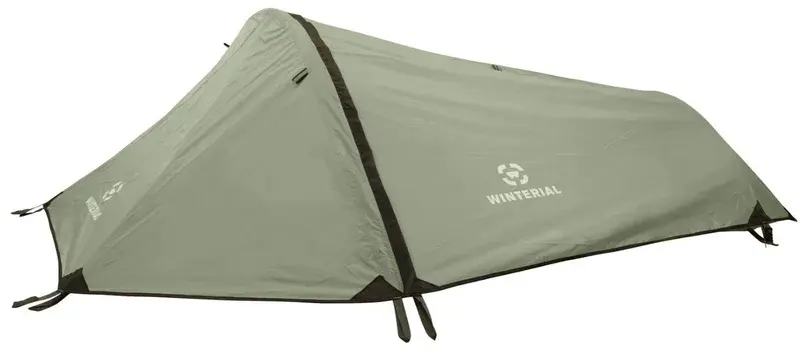
Trouble when nature calls, or no dry entry
The issue of no dry entry is not the problem with bivy tents only; there are much bigger tents with the same issue. But in a bivy tent, this is at its worst due to the inconvenience of a low door.
As soon as you unzip the fly, you will have water on the inner tent’s floor, both from the fly and from the sky. You have seen that happy guy above sitting in his Snugpak Ionosphere tent, now imagine that it rains.
So your sleeping pad will get wet very quickly. What does not end up on the floor, will be absorbed by your clothing on your back. There is no way around it.
Final thoughts
In the end, a bivy tent like my Ferrino Lightent 1 offers a lightweight, compact solution for solo adventurers, but the reality is far from the starry-eyed hype.
Between the cramped space, lack of ventilation, and the damp, chaotic struggle of packing in the rain, it is a trade-off that tests your tolerance as much as it rewards your minimalism.
Practical for a backpack? Correct, this is why I use my bivy tent. Comfortable? Not by a long shot. If you are set on the experience, something like the mentioned Ferrino Lightent Pro or Winterial bivy might do, but do not say I didn’t warn you.
So those were my thoughts about bivy tents. Let me know in the comment section below if you think I am talking nonsense or if you have any question. Check also my another text bivy tents vs bivy bags to see what makes them different.
Thank you for reading. Subscribe to my weakly newsletter and stay informed, the subscription form is given below.
Leave a Reply